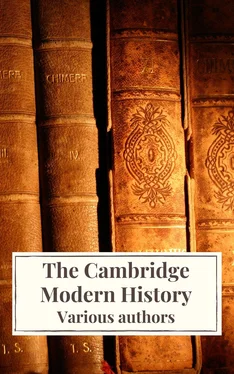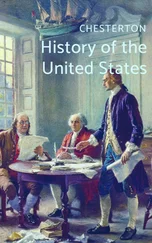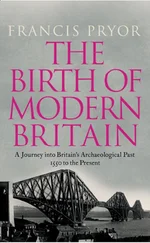R. Nisbet Bain - The Cambridge Modern History
Здесь есть возможность читать онлайн «R. Nisbet Bain - The Cambridge Modern History» — ознакомительный отрывок электронной книги совершенно бесплатно, а после прочтения отрывка купить полную версию. В некоторых случаях можно слушать аудио, скачать через торрент в формате fb2 и присутствует краткое содержание. Жанр: unrecognised, на английском языке. Описание произведения, (предисловие) а так же отзывы посетителей доступны на портале библиотеки ЛибКат.
- Название:The Cambridge Modern History
- Автор:
- Жанр:
- Год:неизвестен
- ISBN:нет данных
- Рейтинг книги:4 / 5. Голосов: 1
-
Избранное:Добавить в избранное
- Отзывы:
-
Ваша оценка:
- 80
- 1
- 2
- 3
- 4
- 5
The Cambridge Modern History: краткое содержание, описание и аннотация
Предлагаем к чтению аннотацию, описание, краткое содержание или предисловие (зависит от того, что написал сам автор книги «The Cambridge Modern History»). Если вы не нашли необходимую информацию о книге — напишите в комментариях, мы постараемся отыскать её.
The first series was planned by Lord Acton and edited by him with Stanley Leathes, Adolphus Ward and George Prothero.
The Cambridge Modern History Collection features all five original volumes:
Volume I: The Renaissance
Volume II: The Reformation, the End of the Middle Ages
Volume III The Wars of Religion
Volume IV: The 30 Years' War
Volume V: The Age of Louis XIV
The Cambridge Modern History — читать онлайн ознакомительный отрывок
Ниже представлен текст книги, разбитый по страницам. Система сохранения места последней прочитанной страницы, позволяет с удобством читать онлайн бесплатно книгу «The Cambridge Modern History», без необходимости каждый раз заново искать на чём Вы остановились. Поставьте закладку, и сможете в любой момент перейти на страницу, на которой закончили чтение.
Интервал:
Закладка:
The ports of Arabia, and the Arab settlements in Eastern Africa, were the inlets through which the produce of India and the Far East were finally dispersed; and large quantities found their way through Suez, Jiddah, Mascat, and Hormuz, to the markets of Europe. It thus appears that the area of the Eastern trade naturally fell into two divisions, the mouth of the Persian Gulf marking the partition. Eastward of this lay the area of export, westward the area of import. Hence the fact that the Portuguese, having rounded Southern Africa, made straight for Calicut, the outpost of the exporting area. The ideas and expectations with which they approached this immense and unique field of enterprise were tinged with the arrogance of prolonged success. It was necessary, as a means to making themselves masters of the Eastern trade, before all else, not only to prove themselves masters of the Asiatic seas, but to be able to defy resistance on land, and to hold by military force whatever positions it might be desirable to occupy. For these purposes such demonstrations of force as had availed them on the African coast were insufficient. Society in the East rested everywhere on a military basis. The native Asiatic princes universally possessed numerous and not ill-equipped armies, though ill-supplied, or not at all, with firearms. By sea the Arabs and Rumes were more formidable. Wherever maritime trade exists it must defend itself against pirates; and piracy was rife on all the Indian and Chinese shores. Hence the larger vessels, both on the Malabar coast and on that of China, were usually manned with fighting men, and those of the Arabs and Rumes occasionally carried large guns. The Oriental fleets, if assembled in one place, would have immensely outnumbered the ships capable of being sent against them by Portugal. But in regard to construction, equipment, and the art of navigation the Portuguese had greatly the advantage. Even the Arabs knew nothing of the art of using a vessel mainly as a military machine. much less of manoeuvring and combined action for attack, defence, pursuit, and co-operation with troops on land. Eastern vessels, indeed, were scarcely capable of being so employed. The hard woods used in constructing them forbade the use of iron nails, and their heavy planks were rudely made fast with cocoa-nut cordage and wooden pins. Steering gear and ground-tackle were of a rudimentary sort: even a moderate gale rendered the ship scarcely manageable, and the guns were useless except at close quarters. The Portuguese, who inherited the naval experience of two thousand years, had become through their African voyages the best seamen in Europe, possessed ships of the newest type, and attacked the Arabian vessels with the confidence begotten of their maritime successes against the Barbary Moors.
The treachery experienced by Da Gama from the Zamorin of Calicut made it still more necessary for the Portuguese to be strong enough to punish, as well as to invade, the enemy; and when Pedro Alvarez Cabral sailed in 1500 in command of the second expedition to India his vessels were formidably armed with artillery. By way of demonstrating his strength Cabral shortly after his arrival captured a large Moorish vessel as it passed the roadstead and presented her to the Zamorin. Suspecting the Moors of obstructing him in procuring lading for his fleet, he attacked and captured a Moorish vessel in the roadstead itself. In reprisal the Moors on shore destroyed the Portuguese factory and massacred its inhabitants. Cabral seized and destroyed ten large Moorish ships, and bombarded the town. He then sailed for Cochin, burning two more ships of Calicut on the way. Cochin, the seat of a Rajah hostile to the Zamorin, was also a port frequented by the Moors, and a few of them resided there permanently. Cabral was amicably received, completed his lading, and promised the Rajah to add Calicut to his dominions, his design in this being to gain the Rajah’s assistance in conquering Calicut for the Portuguese. Being now ready to return, Cabral declined invitations from the Rajahs of Cananor and Quilon, and sailed for Europe. Having encountered a storm, he put into Cananor, where the Rajah promised free trade to the Portuguese, and sent on board an envoy with presents for the Portuguese king. Before his return Joao de Nueva had sailed from Lisbon for India, with four ships and four hundred men. In view of the hostile attitude of the Zamorin, De Nueva made for Cananor, where he learned that the Indian King was ready to attack him with forty ships. Leaving his factors at Cananor, De Nueva sailed at once to attack the enemy in their own waters, and inflicted on them a signal defeat. Successful though the Portuguese had been, the tidings of this continued hostility on the part of the Rajah who dominated the principal emporium of India gave rise at home to grave misgivings. Some counselled the abandonment of an enterprise to which the strength of a small European power seemed unequal. Even if the resistance of Calicut were broken, what would be the situation when Turkey and Egypt should combine with the Arabs to drive Portugal from the precarious lodgment she had acquired? And if the mere threshold of the East had proved so hard to win, how much harder would it be to strike into the heart of the field, and attack the Muslim in the strong positions of the Far East, with the countless millions of China at their back?
Against such arguments the honour of a Christian nation, the lust of territorial aggrandisement, and above all the greed of gold, prevailed in the end. Twenty ships were despatched, in three squadrons, under the general command of the first adventurer, Vasco da Gama, and other commanders followed in rapid succession. The original plan of campaign was still adhered to. Whatever the cost, the Moors must be dislodged from Calicut, the resistance of the native king broken, and the control of the trade transferred to the Portuguese, whose king the Zamorin must acknowledge as his sovereign. Beaten at every point in fair fight, the Zamorin maintained his ground by fraud and treachery. The stream of wealth still poured into Portugal through Cochin and Cananor, immensely augmented by the spoils of captured Moorish vessels, but the Zamorin still held his ground. In an interval during which the Portuguese forces were weakened by the withdrawal of returning ships, he attacked and destroyed Cochin. The Portuguese having retaken it, restored its prince, and built a strong fort for themselves, the infuriated Rajah, having roused such of his neighbours as were amenable to his appeal, seized a similar opportunity and assailed Cochin with fifty thousand men. In a campaign of five months he was defeated and slain by the Portuguese under Duarte Pacheco, who earned the title of the Portuguese Achilles; but his successor maintained the same attitude, and despatched an embassy to the Sultan of Egypt, asking for aid in resisting the invaders. The Sultan sent word to the Pope threatening to destroy the holy places at Jerusalem if the Portuguese persisted in their invasion of India. The only effect of this empty menace was to stimulate the Portuguese King to renewed efforts on a larger scale. The crisis of the struggle was approaching; and in view of this a more comprehensive scheme was adopted. Abandoning the attempt to reduce the obstinate resistance of a single prince, it was determined to attack the Muslim maritime system in all its parts, and to establish a new emporium on the Malabar coast as the commercial and naval centre of the new Portuguese eastern empire. Already the Moorish traders in search of the produce of the Far East had begun to avoid the Malabar coast, and to make their way from the Arabian and African ports by a new route to Malacca. It was resolved to seize this key of the Far East without delay, and to gain possession of the Moorish settlements on the African coast, and the Arabian ports of Hormuz and Aden. By exacting heavy duties at these places the whole trade would gradually be diverted, and the Portuguese would ultimately control the Red Sea itself. The chief African settlements were seized with little difficulty by Francisco de Almeida; and the rest of the programme was successfully carried out by Affonso de Albuquerque (1509-15). The excellent natural harbour of Goa had already been chosen as the new seat of the Portuguese dominions. The town, built by the Muslim fifty years previously, had lately fallen, together with the adjacent country, under the swav of the powerful Adil Khan; and it was well known that here the Muslim enemy intended to concentrate their forces with the view of driving the Portuguese from the Indian seas. A Muslim pirate who foresaw the issue of the contest allied himself with the Portuguese, on the terms that he should be appointed guaztt or port-admiral of Goa, and farmer of the large demesne lands which the conquest would annex to the Portuguese Crown; and on March 4, 1510, Albuquerque entered Goa and received the keys of the fortress. The dispossessed Hindoo inhabitants welcomed the Portuguese as deliverers; and although Adil Khan forced his way again into the town, compelling the Portuguese to evacuate, it was recaptured by Albuquerque (November 25), and strongly fortified. Many Portuguese received grants of land, and married native women; the confiscated estates of the Moorish mosques and Hindoo temples were annexed to the great church of S. Catherina: a mint was set up, the new coinage having on one side the cross of the Order of Christ, on the other ManoePs device of a sphere, lately adopted by him to signalise the vast accession which his dominions had now received. Hindoos and Moors returned to the settlement, acknowledging the Portuguese supremacy; and Goa thus became the most thriving port of the Malabar coast.
Читать дальшеИнтервал:
Закладка:
Похожие книги на «The Cambridge Modern History»
Представляем Вашему вниманию похожие книги на «The Cambridge Modern History» списком для выбора. Мы отобрали схожую по названию и смыслу литературу в надежде предоставить читателям больше вариантов отыскать новые, интересные, ещё непрочитанные произведения.
Обсуждение, отзывы о книге «The Cambridge Modern History» и просто собственные мнения читателей. Оставьте ваши комментарии, напишите, что Вы думаете о произведении, его смысле или главных героях. Укажите что конкретно понравилось, а что нет, и почему Вы так считаете.












